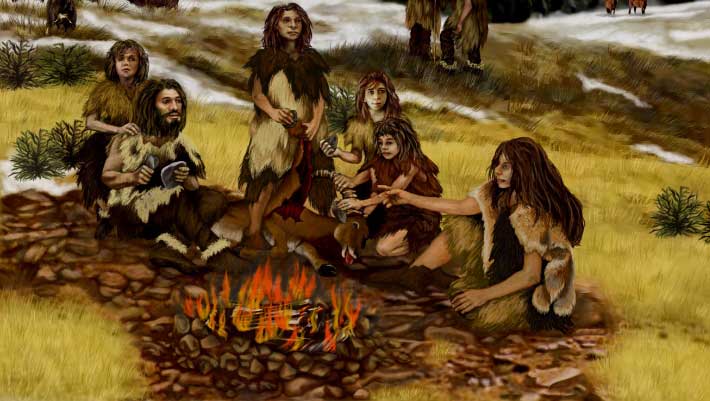The use of fire marks a critical milestone in human evolution, with its initial purposes debated among scholars. While cooking is often cited as the primary driver, a due of researchers at Tel Aviv University proposes that meat and fat preservation, and predator protection were more likely the initial motivations for fire use by Homo erectus during the Lower Paleolithic (1.9 to 0.78 million years ago).

Miki Ben-Dor & Ran Barkai connect early fire use to dietary strategies, emphasizing the nutritional importance of meat and fat from large prey in the Lower Paleolithic; they challenge assumptions about the primacy of cooking in shaping human nutritional evolution, potentially influencing how we understand dietary adaptations in Homo erectus.
“The origins of fire use are a ‘burning’ topic among prehistory researchers around the world,” said Tel Aviv University Professor Ran Barkai, co-author of the study.
“It is generally agreed that by 400,000 years ago, fire use was common in domestic contexts — most likely for roasting meat, and perhaps also for lighting and heating.”
“But there is controversy regarding the preceding million years, and various hypotheses have been put forward to explain why early humans began using fire.”
“In this study, we sought to explore a new perspective on the issue.”
“For early humans, fire use was not a given, and at most archaeological sites dated earlier than 400,000 years ago, there is no evidence of the use of fire,” said Tel Aviv University’s Dr. Miki Ben-Dor, first author of the study.
“Nevertheless, at a number of early sites there are clear signs that fire was used, but without burnt bones or evidence of meat roasting.”
“We understand that early humans at that time — mostly Homo erectus — did not use fire regularly, but only occasionally, in specific places and for special purposes.”
“The process of gathering fuel, igniting a fire, and maintaining it over time required significant effort, and they needed a compelling, energy-efficient motive to do so.”
“We have proposed a new hypothesis regarding that motive.”
In their research, the authors reviewed the existing literature on all known prehistoric sites dated between 1.8 million and 800,000 years ago where evidence of fire use was found.
There are nine such sites worldwide, including Gesher Benot Ya’aqov and Evron Quarry in Israel, six sites in Africa, and one site in Spain.
Additionally, they relied on ethnographic studies of contemporary hunter-gatherer societies, aligning their behavior with the conditions that prevailed in ancient environments.
“We examined what the nine ancient sites had in common, and found that all contained large quantities of bones from large animals — mostly elephants, but also hippopotamuses, rhinoceroses, and others,” Dr. Ben-Dor said.
“From previous studies, we know that these animals were extremely important to early human diets and provided most of the necessary calories.”
“The meat and fat of a single elephant, for example, contain millions of calories, enough to feed a group of 20-30 people for a month or more.”
“A hunted elephant or hippopotamus was thus a real treasure — a kind of meat and fat ‘bank’ that needed to be protected and preserved for many days, since it was coveted not only by predators but also by bacteria.”
An analysis of the findings and calculations of the significant energetic advantage of preserving meat and fat led the researchers to a new conclusion, never before proposed: fire served two vital purposes for early humans: first, to guard the large game from other predators and scavengers seeking to seize the ‘treasure,’ and second, to preserve the meat through smoking and drying, preventing spoilage and making it edible for a long period of time.
“In this study, we propose a new understanding of the factors that motivated early humans to begin using fire: the need to safeguard large hunted animals from other predators, and to preserve the vast quantity of meat over time,” Professor Barkai said.
“It is likely that once fire was produced for these purposes, it was also occasionally used for cooking — at zero marginal energetic cost.”
“Such use may explain evidence of fish roasting from around 800,000 years ago at Gesher Benot Ya’aqov.”
“The approach we propose fits well into a global theory we have been developing in recent years, which explains major prehistoric phenomena as adaptations to the hunting and consumption of large animals, followed by their gradual disappearance and the resulting need to derive adequate energy from the exploitation of smaller animals.”
The findings were published in the journal Frontiers in Nutrition.
_____
Miki Ben-Dor & Ran Barkai. 2025. A bioenergetic approach favors the preservation and protection of prey, not cooking, as the drivers of early fire. Front. Nutr 12; doi: 10.3389/fnut.2025.1585182





















